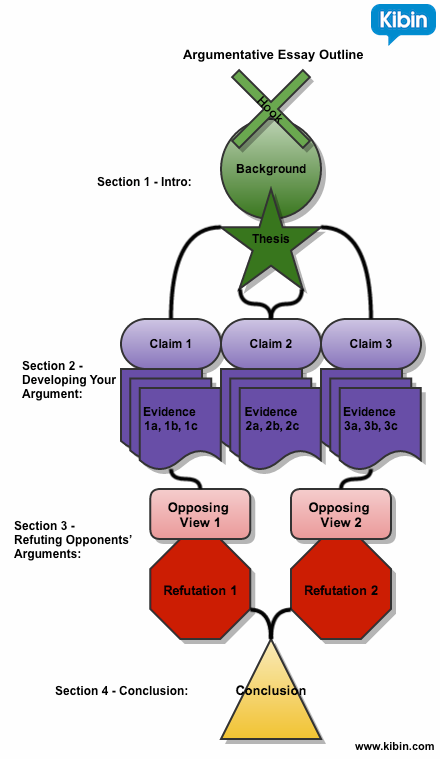
How to Create a Powerful Argumentative Essay Outline
Sure, you’re a lover not a fighter. I am too. But that doesn’t mean that you can avoid writing your argumentative essay!

Since you have to write an argumentative essay, you might as well learn how to write it well, right? I’ve said it time and time again—there’s nothing worse than staring at a blank page. Putting together an argumentative essay outline is the perfect way to turn your blank document into a ready-to-use template. All you have to do is fill in the blanks! In this blog post, I’m going to share with you how to create an argumentative essay outline. At the end, I’ll give you a downloadable skeleton outline you can use to get started.
 ORDER NOW
ORDER NOWStructure of the Argumentative Essay Outline
If you distill your argumentative essay outline down to its basics, you’ll find that it’s made of four main sections:
Intro
Developing Your Argument
Refuting Opponents’ Arguments
Conclusion
That’s not so bad! There’s really nothing to be afraid of.
Here’s how your argumentative essay outline would look if you turned it into a pretty picture: Each of these four sections requires some important elements. Let’s break those down now.
Each of these four sections requires some important elements. Let’s break those down now.
Argumentative Essay Outline Section 1: Your Intro
Your introduction is where you lay the foundation for your impenetrable argument. It’s made up of a hook, background information, and a thesis statement.
1. Hook. Your first sentence is comprised of a “hook.” Don’t know what a hook is? A hook is a sentence that grabs your reader’s attention just like a good Jackie Chan movie grabs the attention of a martial arts fan.
Let’s say I’m writing an argumentative essay about why American people should start eating insects.
My hook could be, “For those interested in improving their diets and the environment, say ‘goodbye’ to eating chicken, fish, and beef and ‘hello’ to eating silk worms, crickets, and caterpillars.”
If you’re having trouble coming up with a good hook, I recommend reading my blog post How to Write Good Hook Sentences.
2. Background information. The next part of your intro is dedicated to offering some detailed background information on your topic.
Try answering the following questions:
What is the issue at hand? Who cares? Where is this issue prevalent? Why is it important?
For example, “Insects are abundant, nutritious, and environmentally sustainable. Currently, people in the United States shun the idea of eating insects as part of their diets, favoring instead less nutritious and environmentally destructive food options, such as beef and pork. The UN recently issued a statement calling for more world citizens to embrace the many benefits of eating insects.”
3. Thesis. Your thesis typically makes up the last sentence of your intro paragraph. This is where you clearly state your position on the topic and give a reason for your stance.
For example, “A diet of insects can help fix problems related to starvation, obesity, and climate change, and therefore, United States citizens should learn to rely on a variety of insects over chicken, beef, and fish as their main source of protein and nutrition.”
Notice the word “should” in my thesis statement? Using this word makes it clear I’m taking a stance on the argument.
You’ll also notice that my thesis statement sets up the three claims I’m going to expand on later: a diet of insects can help fix problems related to starvation, obesity, and climate change.
Here are even more example argumentative thesis statements.
Let’s talk about adding those claims to our argumentative essay outline now.
 ORDER NOW.
ORDER NOW.